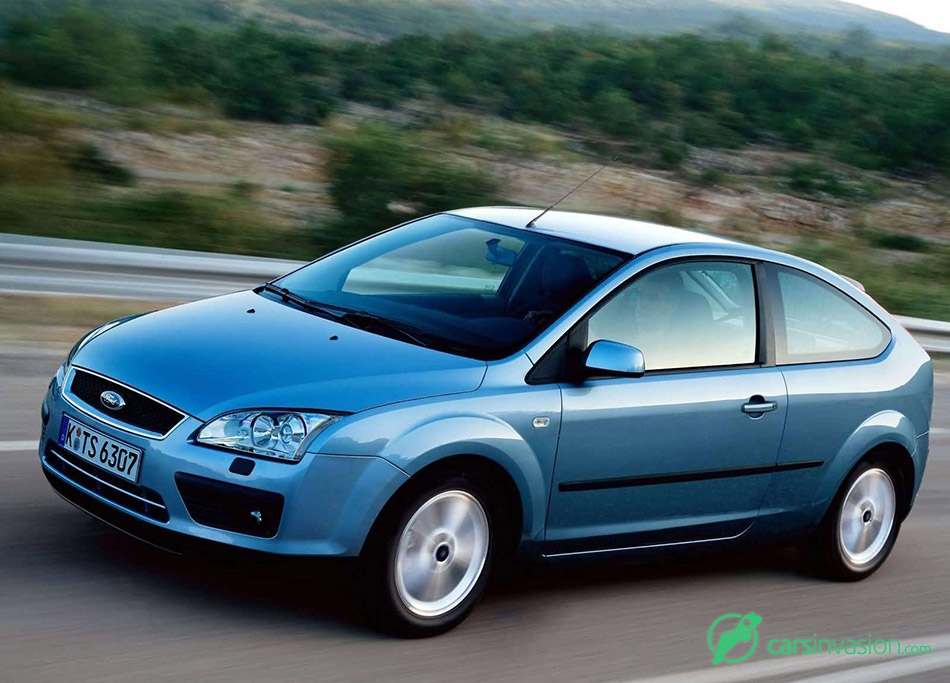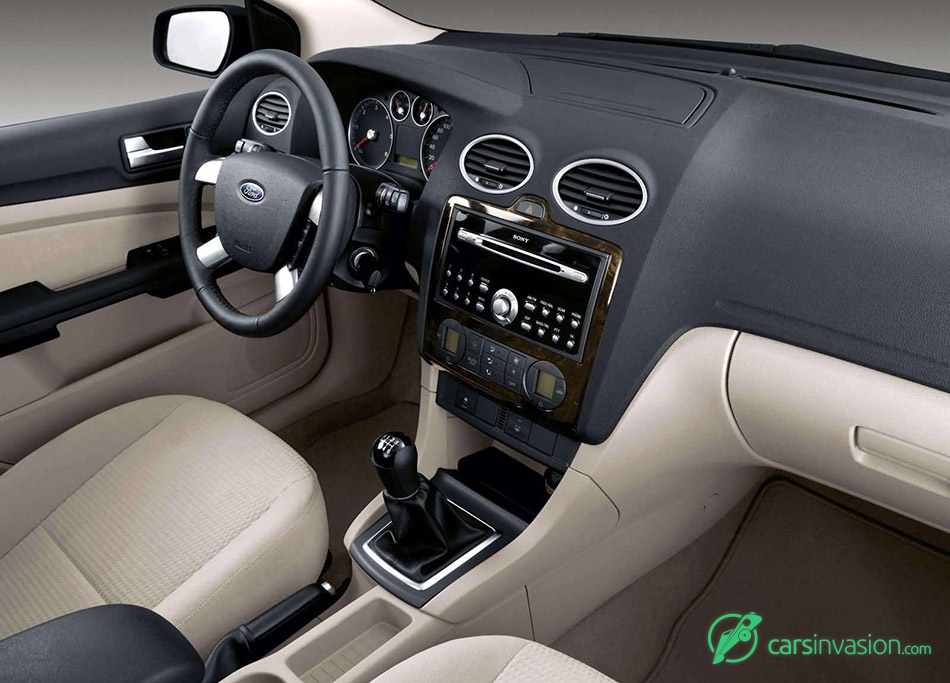The all-new Mk 2 Ford Focus was launched in 2004. The Focus was launched at the Paris Motor Show on September 23, 2004 as a three and five-door hatchback and a station wagon, although the Focus was truly previewed, in 4-door saloon form, as the 'Focus Concept' developed by Ford Australia at the Beijing Motor Show in mid-2004.
Design and engineering
The Mk 2, codenamed C307, uses a new platform called C1 which is shared with the Volvo S40, V50 and C70, Mazda3 and Focus C-MAX. Ford calls this platform sharing programme "Global Shared Technologies".
The basic suspension design, which contributed much to the Mk 1's success, has been carried over largely unchanged from its predecssor which, along with a 10% stiffer bodyshell, offers even better handling and ride according to Ford. The same body styles as the Mk 1 Focus were offered, though the saloon did not appear until mid-2005.
The Focus Mk 2 is much larger than its predecessor with a 25 mm (1 in) increase in wheelbase, 168 mm (6.6 in) longer, 8 mm (0.3 in) taller and 138 mm (5.4 in) wider. As a result the interior and boot space has increased. New technologies include a KeyFree system, a solar-reflect windshield, adaptive front lighting, Bluetooth hands-free phones and voice control for audio, telephone and climate control systems.
It also features either a Durashift 6-speed manual, Durashift 4-speed automatic transmission or the all-new Durashift advanced manual transmission or just the standard manual.
Stylistically, the Mk 2's styling features the same design language found in the Mondeo and Fiesta. Although still recogniseable as a Focus the new car uses styling features from the abandoned B-Proposal for the original Focus which were never reached production.
The interior and dashboard follows on from the Mk 2 Mondeo and is constructed from higher quality plastics than before, and the overall feeling of solidity of the car has been increased markedly in a deliberate attempt to emulate the standards set by the Volkswagen Golf.
Engines
The engine line up for the Mk II is a mixture of old and new. Revised versions of the 1.4 litre and 1.6 litre all aluminium Zetec-SE engines from the previous generation Focus were carried over, although the units were now renamed Duratec (see next paragraph). The 1.8 litre and 2.0 litre Zetec petrol engines of the original were dropped, with the 1.8 litre unit being replaced by an all-new 1.6 litre Duratec Ti-VCT engine with variable valve timing, while the 2.0 litre engine was replaced by the Mk 2 Mondeo's 2.0 litre Duratec engine.
It should be noted that Ford's 1.8 litre and 2.0 litre Duratec engines are heavily revised versions of the old 1.8 litre and 2.0 litre Zetec engines from the previous Focus and Mk I Mondeo and bear no relation to the 1.4 litre and 1.6 litre Duratec engines, the latter being revised versions of the Yamaha developed Zetec-SE engines.
The PSA-developed Duratorq diesel engine in 1.6 L 100 hp and 110 hp editions, Ford's own 'Lynx' Duratorq 1.8L 115 hp diesel carried over from the previous model and the PSA DW10 diesel in 2.0 L form rounds off the range in standard Focus guise (this is a different unit to the 'Puma' diesel in the Mondeo).
The new Focus ST, however, has a 2.5 litre 220 bhp 5 cylinder straight engine, derived from Volvo as used in the S40 T5. The Focus ST's engine uses a turbo and offers a healthy 236 lb ft torque peaking as low as 1,600 rpm.
Source: Ford
























